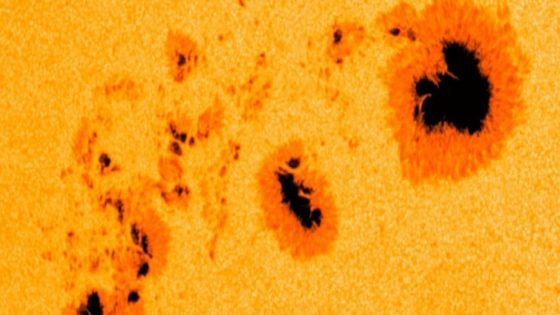Sunspots have intrigued scientists since Galileo first spotted them in the early 1600s. These dark patches on the Sun’s surface can last for days or even months, but their stability has remained a mystery until now. A groundbreaking study published on 2025-07-16 05:40:00 has unraveled this centuries-old puzzle, shedding light on the delicate balance that keeps sunspots intact.
- Sunspots observed since the early 1600s
- New method reveals sunspot stability balance
- Sunspots have strong magnetic fields
- Sunspots follow an 11-year activity cycle
- Improved technique enhances ground-based observations
- Findings aid in predicting solar storm events
Led by researchers from Germany‘s Institute of Solar Physics, the international team developed an innovative method to analyze sunspot stability. Their findings reveal that the magnetic forces within sunspots are perfectly balanced by gas pressure, allowing these features to persist despite the Sun’s turbulent environment. This discovery not only enhances our understanding of solar physics but also has significant implications for predicting solar storms.
This breakthrough raises important questions about the implications of sunspot stability. How can we leverage this knowledge to better predict solar storms? Understanding the mechanisms behind sunspot stability could lead to improved forecasting methods, essential for protecting our technology and infrastructure.
- Sunspots follow an 11-year cycle, affecting solar storm activity.
- Magnetic configurations near sunspots can trigger coronal mass ejections.
- Enhanced observation techniques allow for satellite-quality results from ground-based telescopes.
As we continue to unravel the mysteries of our Sun, this research marks a significant advancement in solar physics. Future studies could lead to even greater insights, helping US safeguard our technology and infrastructure against solar threats.

































